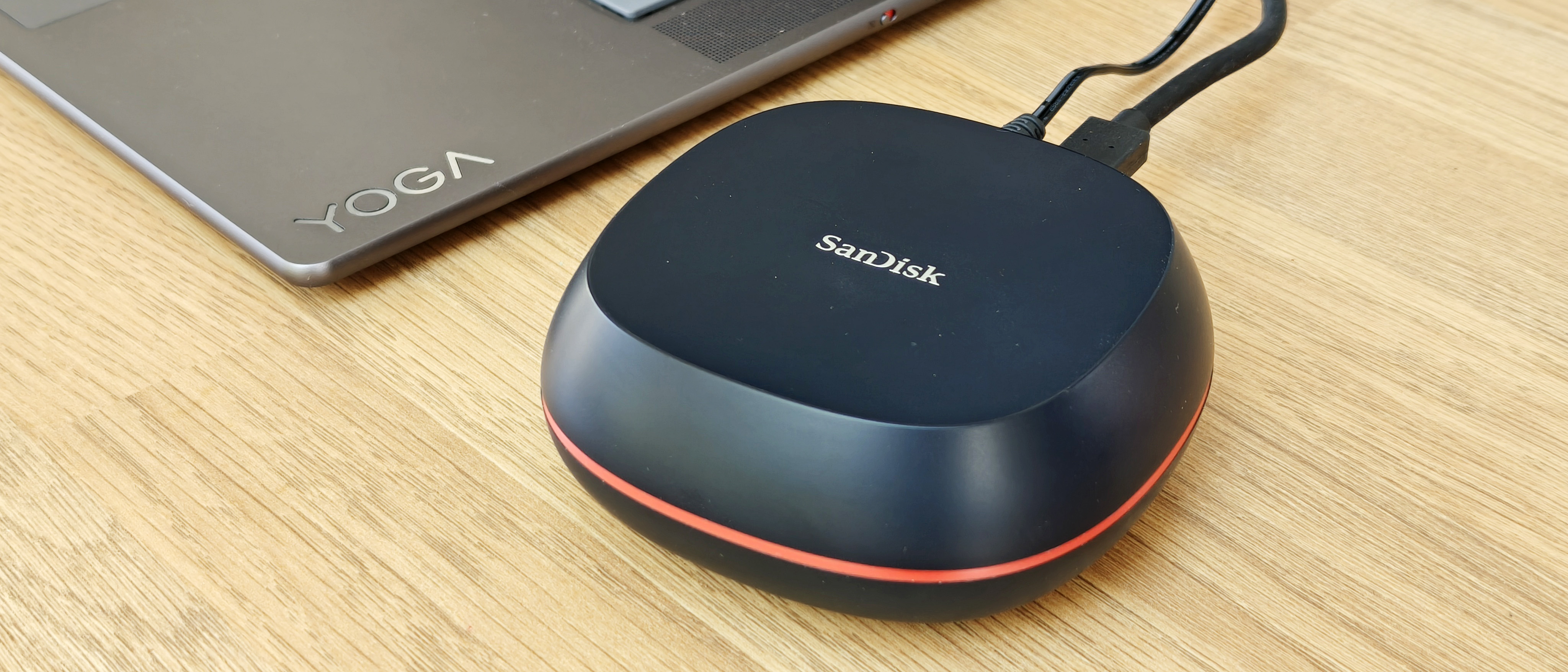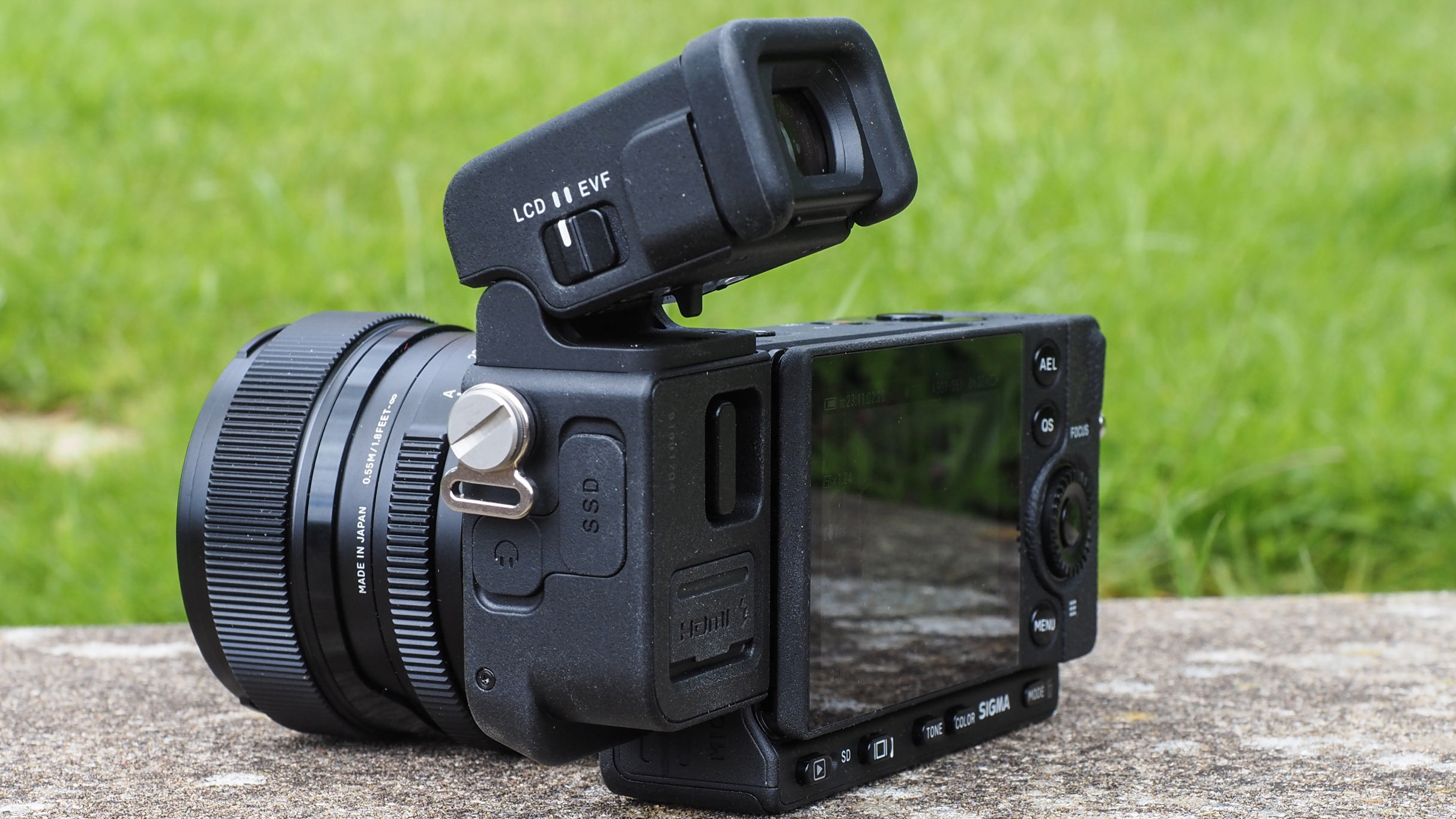Digital Camera World Verdict
If you want (reasonably) high-capacity storage that also comes close to matching the speed of your computer's internal SSD, then the SanDisk Desk Drive is one of the few devices that can cover both bases. I found it to be significantly faster than a conventional desktop hard drive, recording real-world transfer speeds of over 500MB/s. It's not cheap, but that's to be expected, and the benefit of quicker transfer times and less workflow downtime could well be worth the extra outlay if you regularly shift large quantities of data.
Pros
- +
Very quick
- +
Compact
- +
Easy to use
Cons
- -
Capacity could be limiting
- -
Predictably costly
Why you can trust Digital Camera World
The SanDisk Desk Drive is a high-capacity storage solution designed to replace a conventional desktop external hard drive. The standout feature is that it uses solid state storage rather than a traditional mechanical hard drive. Consequently, the Desk Drive is capable of read speeds up to 1000MB/s and write speeds up to 900MB/s, making it around 4x faster than conventional desktop storage. Two capacity options are available: 4TB and 8TB. We're testing the 8TB model here.

Features
Not only does the Desk Drive offer superior transfer speeds to a normal desktop hard drive, it's also smaller, measuring just 99.2mm square and 40.2mm high. Connection is via USB 3.2 Gen 2 and a Type-C connector (a Type-C to Type-C cable is included). The drive comes formatted in exFAT for out-of-the-box compatibility with Windows and Mac computers, plus it's compatible with Apple Time Machine for easy back-ups. Windows users can create back-ups using the downloadable Acronis True Image software for Western Digital.
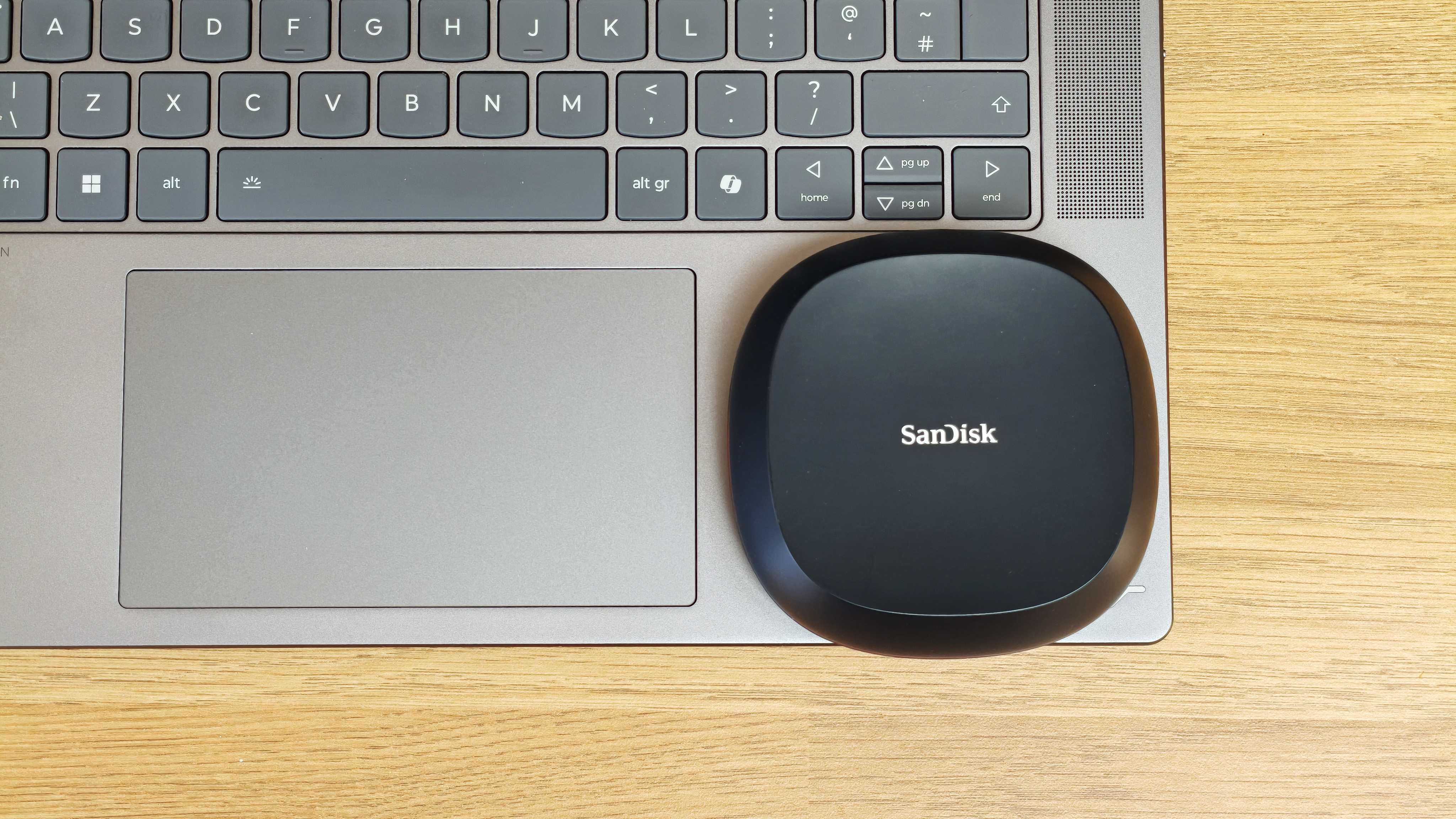
Design & handling
With its rounded-off square form and low height, the Desk Drive is unlike typical desktop hard drives which tend to be much bulkier, tall devices. Its plastic exterior feels tough and solid, with no noticeable flex, and the drive is surprisingly heavy - I expect SanDisk has added a weight inside so it sits more securely on a desk.
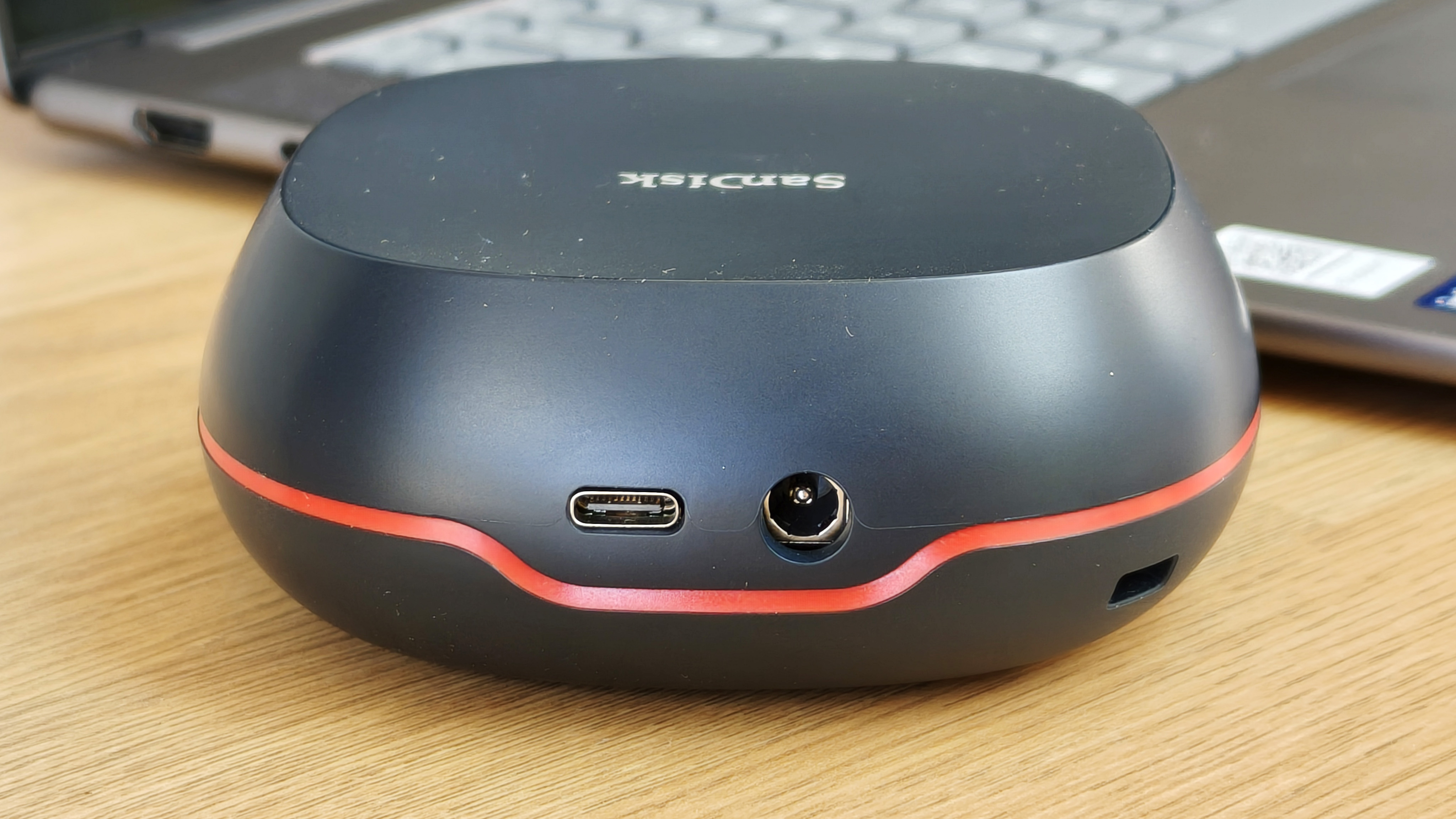
At the back of the drive is a single USB-C port, and an AC input socket. Yes, the Desk Drive requires a dedicated power supply, unlike portable SSDs which are powered by their USB connection. However, this is totally normal for desktop storage, and is of little concern when the drive will rarely be moved anyway.
Performance
SanDisk claims a maximum 1000MB/s read speed and a potential 900MB/s write rate. Our benchmarking software revealed this to be actually quite conservative, as I recorded around 1050MB/s for both read and write speeds.
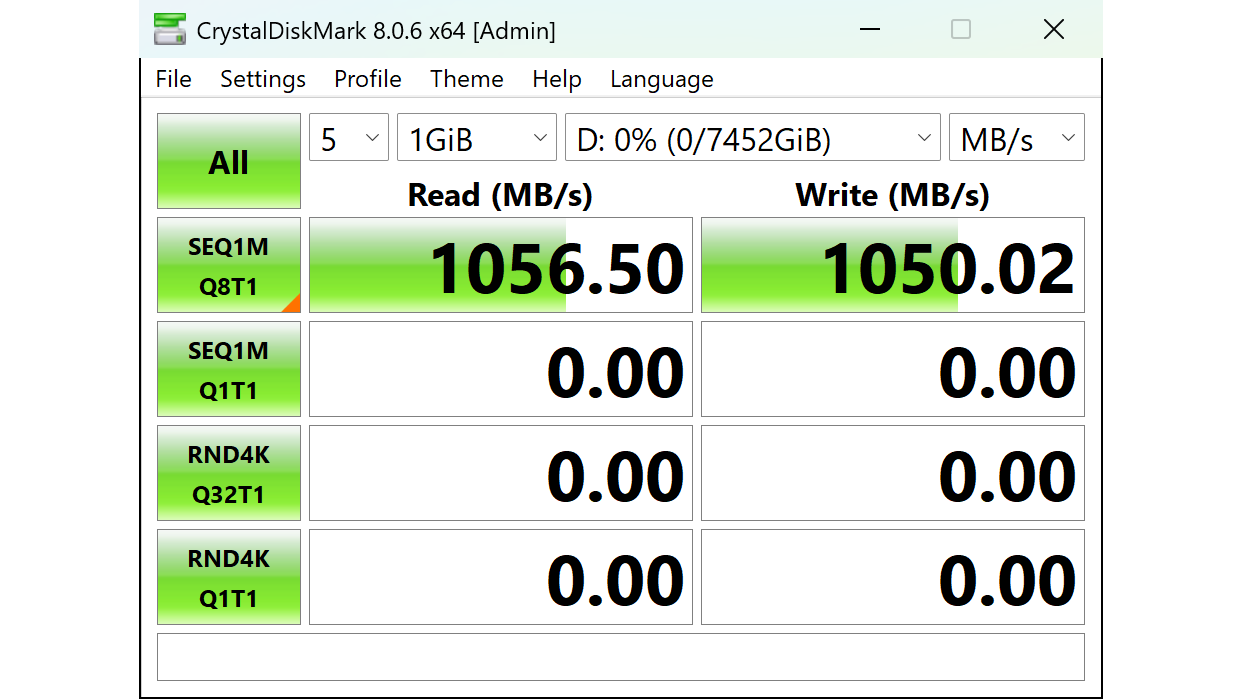
But as benchmarking software isn't a real-world representation of how an SSD will perform, I also ran some practical tests transferring files to and from the drive. I used a folder of images totalling 25.7GB, as well as one large 36.2GB file, to test how fast the drive is when transferring multiple small files and a single large file (the latter will always result in faster read/write speeds). I then transferred each file type to and from the SSD three times, and used the average speed from the quickest transfer time. The internal NVMe SSD built into my test laptop is considerably faster than the Desk Drive, so it was not a bottleneck. Here's how the Desk Drive performed in this real-world testing:
| Header Cell - Column 0 | Read | Write |
|---|---|---|
Single large file | 783MB/s | 619MB/s |
Multiple small files | 758MB/s | 534MB/s |
Though these real-world transfer speeds are considerably lower than the advertised maximum read/write performance, that's to be expected for any SSD or hard drive. The Desk Drive still delivers speeds well beyond what a conventional desktop hard drive is capable of.
Verdict
If you want high-capacity storage that also comes close to matching the speed of your computer's internal SSD, then the SanDisk Desk Drive is one of the few devices that can cover both bases. Some may find the maximum 8TB of storage limiting when compared to the 20+TB you can get with a conventional desktop hard drive, but that's a compromise that has to be made to keep the price reasonable.
At the time of writing the 4TB Desk Drive retails for around $290, while the 8TB version costs roughly $600. That makes the 4TB Desk Drive approximately twice the price of an equivalent, mechanical desktop hard drive. However, things get trickier with the 8TB Desk Drive. Conventional 8TB desktop hard drives are barely more expensive than a 4TB model, making the 8TB Desk Drive almost 4x more costly per terabyte of storage.
Even so, if you're regularly transferring hours of high-res raw video footage, the benefit of quicker transfer times and less workflow downtime could well be worth the extra outlay.
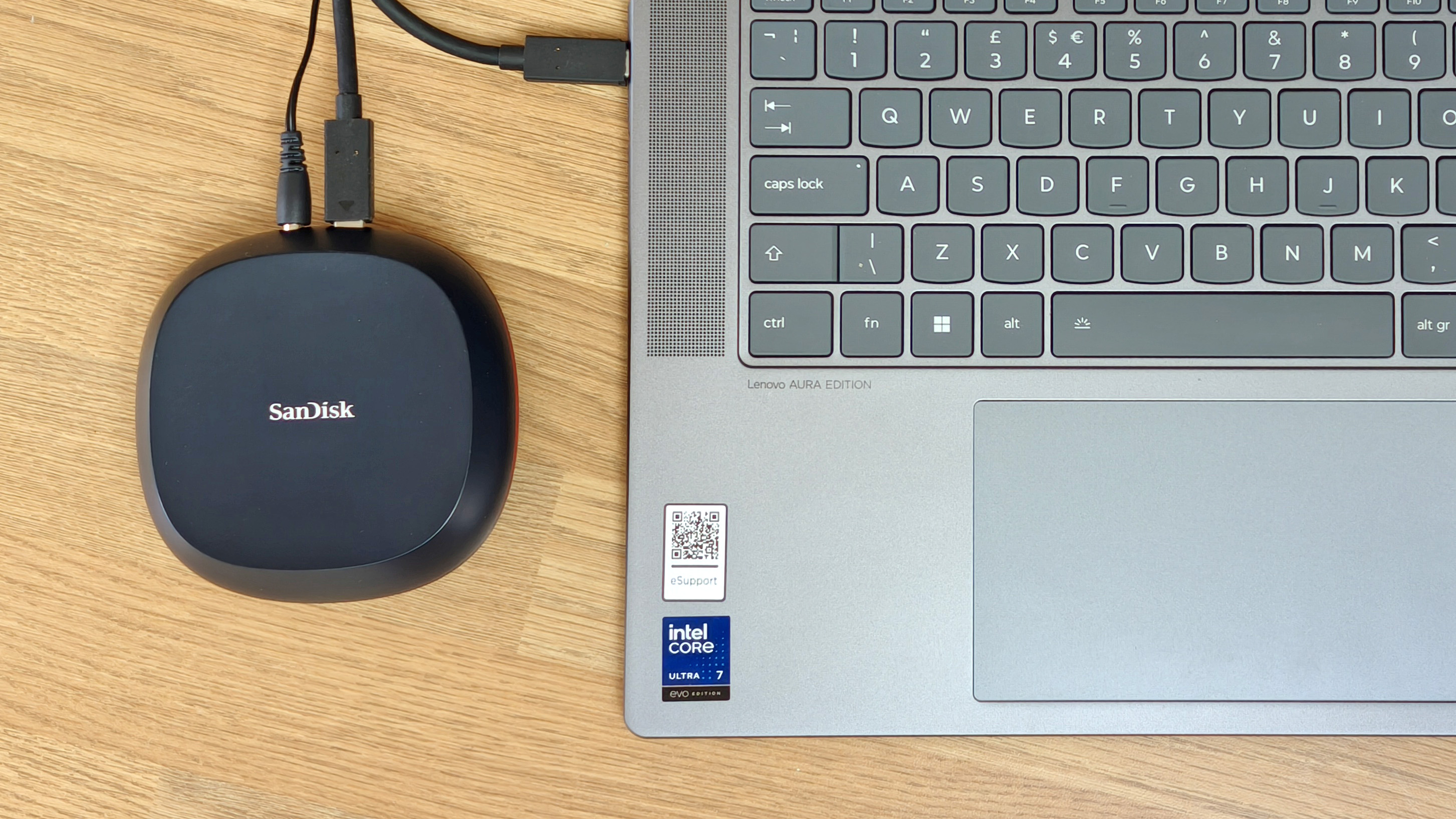
Ben is the Imaging Labs manager, responsible for all the testing on Digital Camera World and across the entire photography portfolio at Future. Whether he's in the lab testing the sharpness of new lenses, the resolution of the latest image sensors, the zoom range of monster bridge cameras or even the latest camera phones, Ben is our go-to guy for technical insight. He's also the team's man-at-arms when it comes to camera bags, filters, memory cards, and all manner of camera accessories – his lab is a bit like the Batcave of photography! With years of experience trialling and testing kit, he's a human encyclopedia of benchmarks when it comes to recommending the best buys.
You must confirm your public display name before commenting
Please logout and then login again, you will then be prompted to enter your display name.
